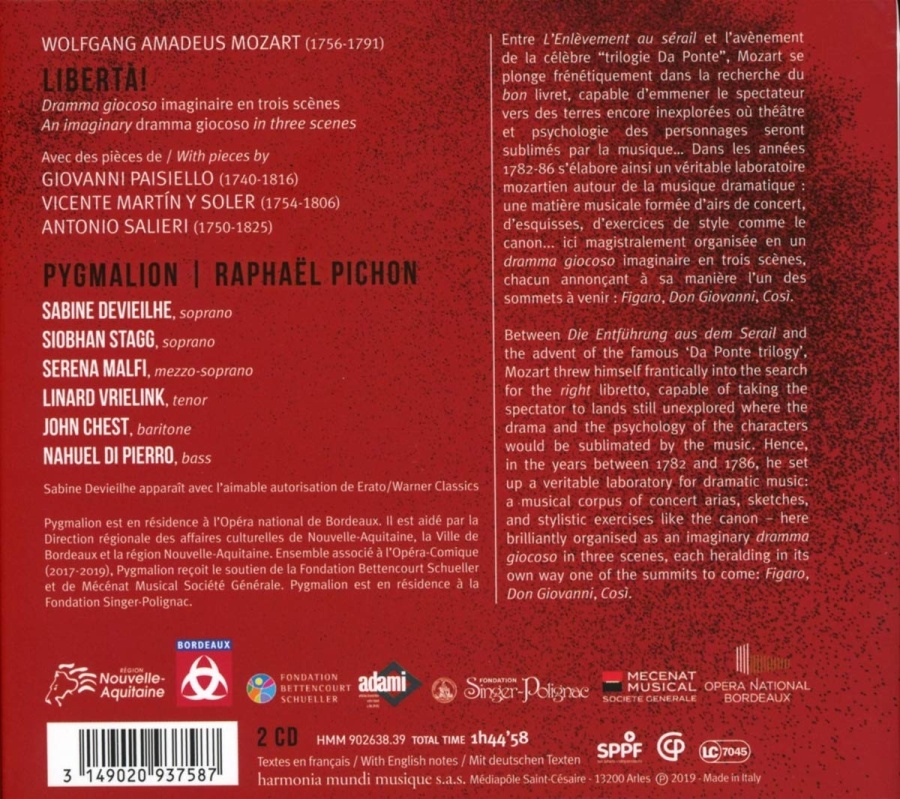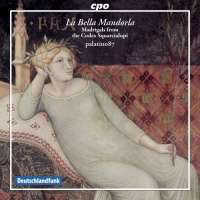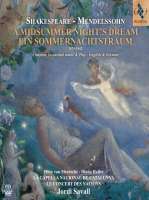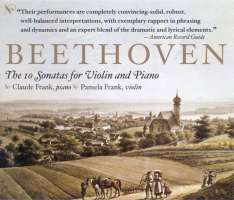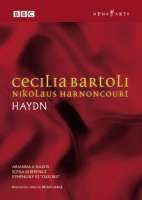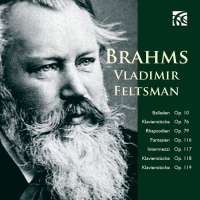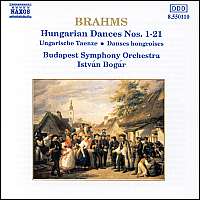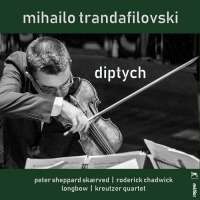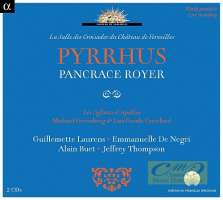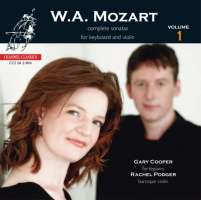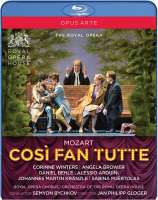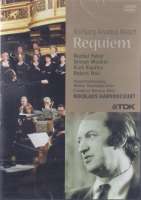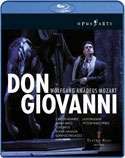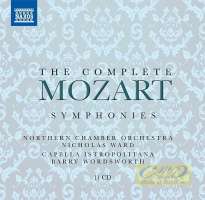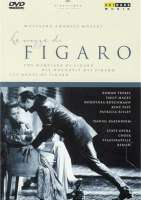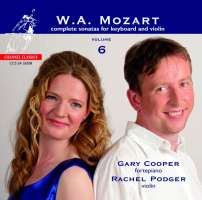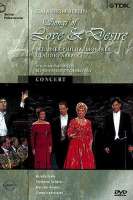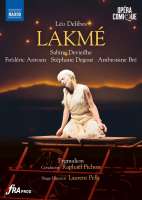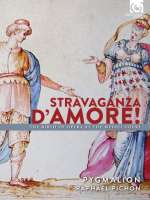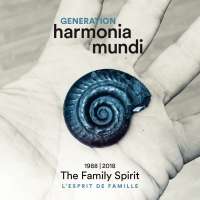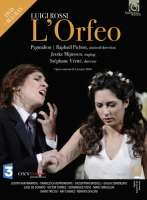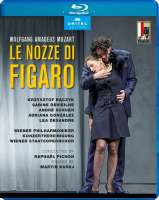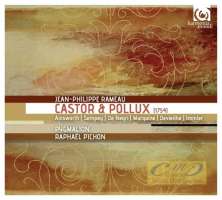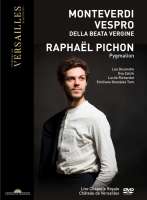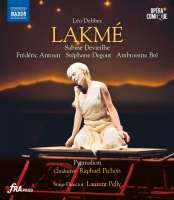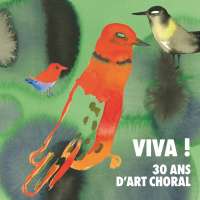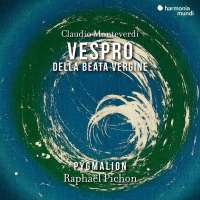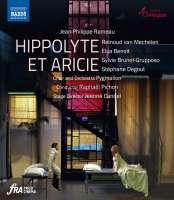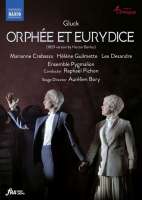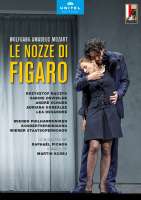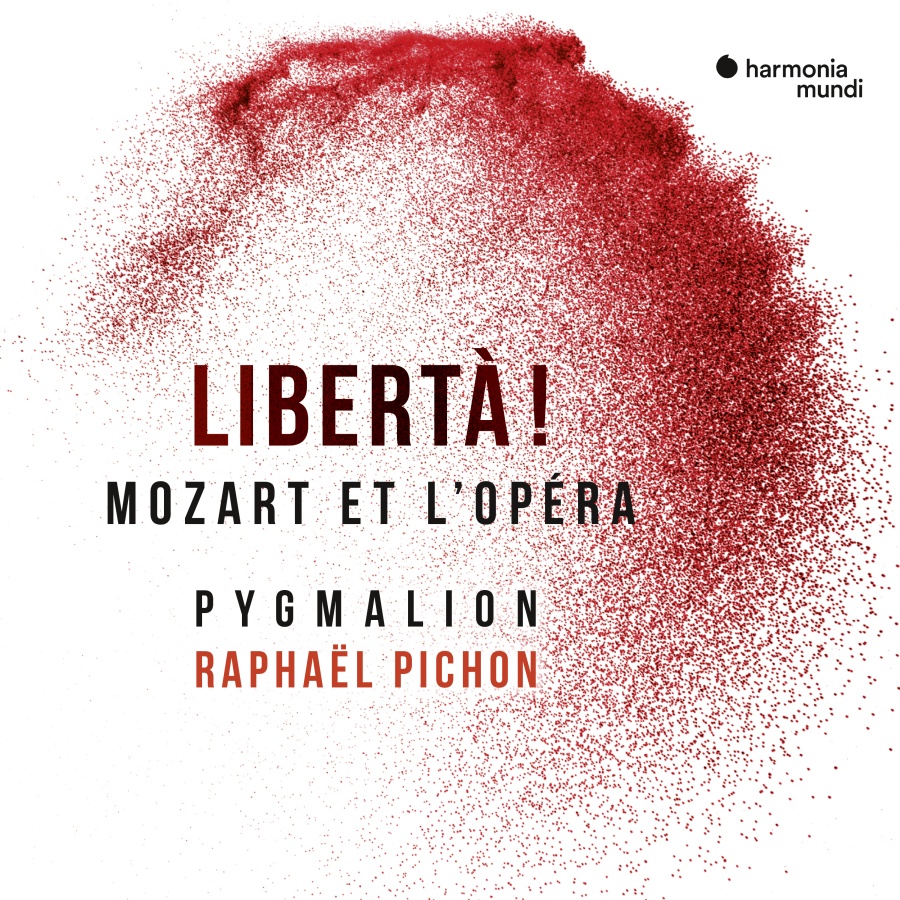
kompozytor
Mozart, Wolfgang Amadeus
tytuł
Libertà! - Mozart et l’Opéra
wykonawcy
Ensemble Pygmalion;
Pichon, Raphaël
Pichon, Raphaël
nr katalogowy
HMM 902638.39
opis
Between Die Entführung aus dem Serail and the advent of the famous ‘Da Ponte trilogy’, Mozart threw himself frantically into the search for the right libretto, capable of taking the spectator to lands still unexplored where the drama and the psychology of the characters would be sublimated by the music. Hence, in the years between 1782 and 1786, he set up a veritable laboratory for dramatic music: a musical corpus of concert arias, sketches, and stylistic exercises like the canon – here brilliantly organised as an imaginary dramma giocoso in three scenes, each heralding in its own way one of the summits to come: Figaro, Don Giovanni, Così.
• Mozart: Ah che ridere! (from La sposo deluso)
• Mozart: Bella mia fiamma, addio... Resta, oh cara, K528
• Mozart: Caro bell'idol mio, K562
• Mozart: Corpo di Satanasso! (from L'oca del Cairo, K422)
• Mozart: Così dunque tradisci … Aspri rimorsi atroci, K432
• Mozart: Der Schauspieldirektor, K486: Overture
• Mozart: Dove mai trovar quel ciglio? (from Lo sposo deluso)
• Mozart: Io ti lascio, oh cara, addio, KAnh. 245
• Mozart: Lo sposo deluso, K430: Overture
• Mozart: Nascoso e il mio sol, K557
• Mozart: Ne pulvis et cinis (from Thamos, König in Ägypten, K345)
• Mozart: No, che non sei capace, K419
• Mozart: Per pieta, non ricercate KV 420
• Mozart: Piu non si trovano, K549
• Mozart: Ridente la calma, K152
• Mozart: Se lontan, ben mio, K438
• Mozart: Spiegarti non poss'io, K489
• Mozart: Thamos, König in Ägypten, K.345: Overture
• Mozart: Vado, ma dove? oh Dei!, K583
• Mozart: Warnung 'Männer suchen stehts zu naschen', K433
• Paisiello: Saper bramate (from Il barbiere di Siviglia)
• Salieri: Con mille smanie al core (from La scuola de' gelosi)
• Salieri: Son le donne sopraffine (from La scuola de' gelosi)
• Soler, V M: Una cosa rara: O quando un si bel giubilo
Works:
• Mozart: Ah che accidenti! (from Lo sposo deluso)
• Mozart: Ah che ridere! (from La sposo deluso)
• Mozart: Bella mia fiamma, addio... Resta, oh cara, K528
• Mozart: Caro bell'idol mio, K562
• Mozart: Corpo di Satanasso! (from L'oca del Cairo, K422)
• Mozart: Così dunque tradisci … Aspri rimorsi atroci, K432
• Mozart: Der Schauspieldirektor, K486: Overture
• Mozart: Dove mai trovar quel ciglio? (from Lo sposo deluso)
• Mozart: Io ti lascio, oh cara, addio, KAnh. 245
• Mozart: Lo sposo deluso, K430: Overture
• Mozart: Nascoso e il mio sol, K557
• Mozart: Ne pulvis et cinis (from Thamos, König in Ägypten, K345)
• Mozart: No, che non sei capace, K419
• Mozart: Per pieta, non ricercate KV 420
• Mozart: Piu non si trovano, K549
• Mozart: Ridente la calma, K152
• Mozart: Se lontan, ben mio, K438
• Mozart: Spiegarti non poss'io, K489
• Mozart: Thamos, König in Ägypten, K.345: Overture
• Mozart: Vado, ma dove? oh Dei!, K583
• Mozart: Warnung 'Männer suchen stehts zu naschen', K433
• Paisiello: Saper bramate (from Il barbiere di Siviglia)
• Salieri: Con mille smanie al core (from La scuola de' gelosi)
• Salieri: Son le donne sopraffine (from La scuola de' gelosi)
• Soler, V M: Una cosa rara: O quando un si bel giubilo
nośnik
CD
x 2
gatunek
Muzyka klasyczna
producent
Harmonia Mundi
data wydania
04-11-2019
EAN / kod kreskowy
3149020937587

(Produkt nie został jeszcze oceniony)
cena 115,00 zł
lubProdukt na zamówienie
Wysyłka ustalana indywidualnie.
Darmowa wysyłka dla zamówień powyżej 300 zł!
Darmowy kurier dla zamówień powyżej 500 zł!
sprawdź koszty wysyłki